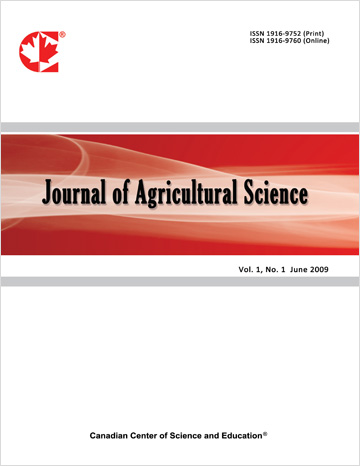Efficacy of Pre-Emergence and Post-Emergence Soybean Herbicides for Control of Glufosinate-, Glyphosate-, and Imidazolinone-Resistant Volunteer Corn
- Parminder Chahal
- Greg Kruger
- Humberto Blanco-Canqui
- Amit Jhala
Abstract
Glyphosate-resistant corn and soybean are grown in rotations in the Midwest, including Nebraska. Volunteer corn is a problematic weed in soybean fields because it causes harvest problems, reduces yield and seed quality, and potentially harbors insects, pests, and diseases. Several pre-packaged herbicides have been registered in soybean in recent years, but response of volunteer corn to these herbicides has not yet been documented. Greenhouse experiments were conducted to evaluate the response of glufosinate-, glyphosate-, and imidazolinone-resistant volunteer corn to 20 pre-emergence (PRE) and 17 post-emergence (POST) soybean herbicides. Cumulative emergence of volunteer corn was not affected by PRE soybean herbicides compared with the nontreated control regardless of herbicide-resistant trait at 21 days after treatment (DAT). Although comparable with several other treatments, clomazone provided ? 90% control of glufosinate- and imidazolinone-resistant volunteer corn at 21 DAT. The POST soybean herbicides were applied when volunteer corn plants were at the 2 to 3 or 5 to 6 leaf stage. The ACCase-inhibiting herbicides, including clethodim, fenoxaprop plus fluazifop, fluazifop, quizalofop, and sethoxydim, provided ? 96 and ? 85% control of the 2 to 3 or 5 to 6 leaf stage volunteer corn, respectively, regardless of the herbicide-resistance trait at 28 DAT. Glyphosate tank mixed with acifluorfen, chlorimuron-ethyl, or imidazolinones usually provided > 83% control of glufosinate-and imidazolinone-resistant volunteer corn when sprayed at the 2 to 3 leaf stage at 28 DAT, but control was ? 71% for the 5 to 6 leaf stage volunteer corn. Similar results were usually reflected in volunteer corn biomass. It is concluded that PRE soybean herbicides partially controlled volunteer corn; therefore, ACCase inhibiting herbicides are the only highly effective option for soybean growers.
- Full Text:
 PDF
PDF
- DOI:10.5539/jas.v6n8p131
Journal Metrics
- h-index: 67
- i10-index: 839
- WJCI (2023): 0.884
- WJCI Impact Factor (2023): 0.196
Index
- AGRICOLA
- AGRIS
- BASE (Bielefeld Academic Search Engine)
- Berkeley Library
- CAB Abstracts
- ChronosHub
- CiteSeerx
- CNKI Scholar
- Copyright Clearance Center
- CrossRef
- DESY Publication Database
- DTU Library
- e-Library
- EBSCOhost
- EconPapers
- Elektronische Zeitschriftenbibliothek (EZB)
- EuroPub Database
- Excellence in Research for Australia (ERA)
- Google Scholar
- Harvard Library
- IDEAS
- iDiscover
- Jisc Library Hub Discover
- JournalTOCs
- KindCongress
- LIVIVO (ZB MED)
- LOCKSS
- Max Planck Institutes
- Mendeley
- MIAR
- Mir@bel
- NLM Catalog PubMed
- Norwegian Centre for Research Data (NSD)
- Open J-Gate
- OUCI
- PKP Open Archives Harvester
- Polska Bibliografia Naukowa
- Qualis/CAPES
- RefSeek
- RePEc
- ROAD
- ScienceOpen
- Scilit
- SCiNiTO
- Semantic Scholar
- SHERPA/RoMEO
- Southwest-German Union Catalogue
- Standard Periodical Directory
- Stanford Libraries
- SUDOC
- Swisscovery
- Technische Informationsbibliothek (TIB)
- Trove
- UCR Library
- Ulrich's
- UniCat
- Universe Digital Library
- WorldCat
- WRLC Catalog
- Zeitschriften Daten Bank (ZDB)
Contact
- Anne BrownEditorial Assistant
- jas@ccsenet.org
